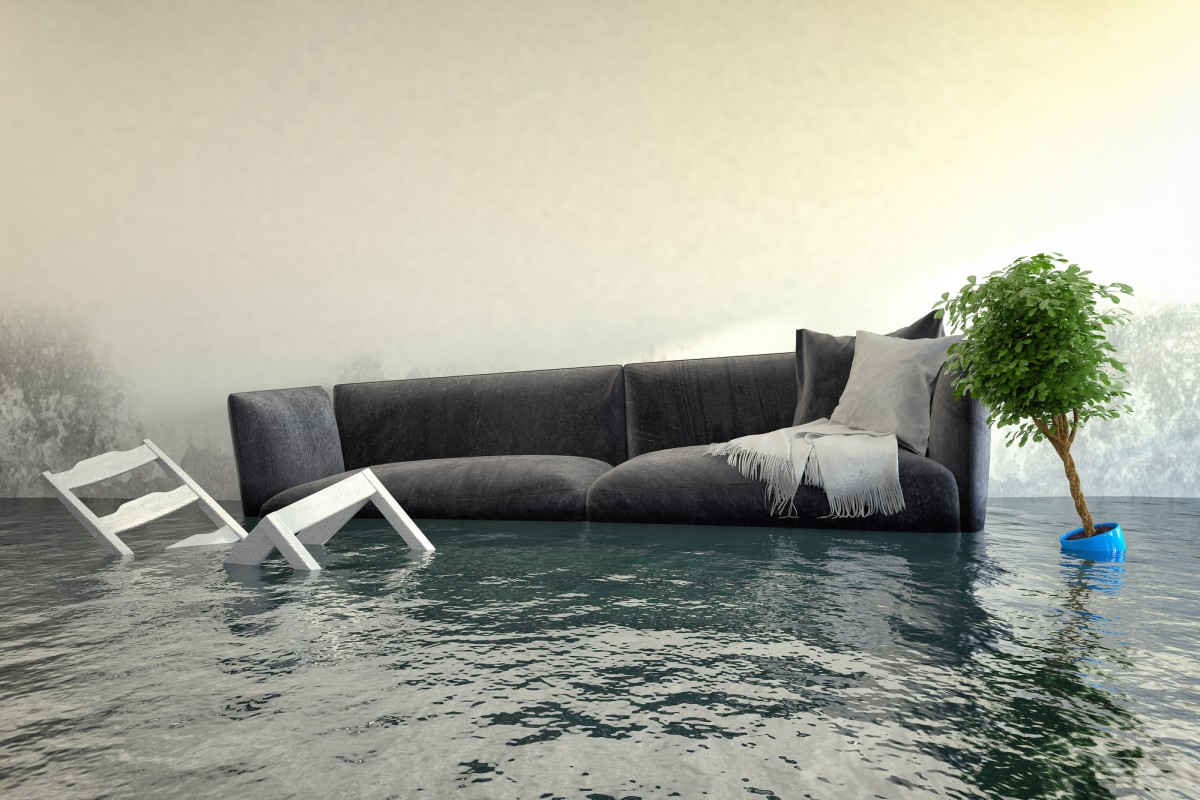
Note: If you think that you have water damage in your home, it is important to act immediately.
Water is one of the most powerful forces in nature and can play havoc if it leaks, detected or undetected, into your home. Water damage will continue to worsen over time. Learn what you need to know about water damaged home interiors and how to tackle the situation appropriately. The first step is to find and stop the water from coming in. Depending on the situation, you may need to hire a professional to repair plumbing or roofing. Look for the following:
Signs of Water Damage
- Odors – Standing water stagnates. Rotting wood emits an earthy smell. Mold and mildew smell much the same. If you enter a room or open a cabinet and notice a musty, peculiar smell, it’s likely you not only have a water leak somewhere, but damage has occurred.
- Fuzzy, discolored growths – Mold spores float through every waft of air inside and out. If they encounter a moist, dark area with a food source – which includes most building materials – mold, mildew and fungus will thrive. Within 36 to 72 hours, it’s entrenched. The longer it grows, the worse it gets.
- Stains and discolorations – Brownish and dark stains on your ceiling, walls or floors are a sign of a leak. Walls and floors may also discolor.
- Blistering or peeling wall surfaces – Water invading the wall material may cause paint to lose adhesion and separate, either blistering or peeling. Wallpaper, plaster and other wall coverings may act the same.
- Damaged walls and ceilings – Beyond stains and the appearance of the wall sheathing, the wall or ceiling itself may begin to fail. The wall may warp or buckle, and the ceiling may begin to sag. A soft, spongy surface it indicates a definite problem. Drywall (the most common wall material) absorbs water easily and begins to swell and disintegrate. Walls or ceilings made from lath and plaster don’t fare much better.
- Damaged floors – Buckling, cracking, cupping (curving at the edges) or soft flooring are a likely signs of water damage. Investigate changes in your floor immediately.
If you’re uncertain whether you have a leak or simply want to confirm your suspicions, consider using a moisture meter on your walls, ceilings or floors. Simply follow the manufacturer’s instructions to take the moisture reading. You can also use
For more information on detecting and repairing water damage, see
Stoney Creek Contracting prides itself in quality residential remodeling projects and construction. Licensed and insured, we go the extra mile to maintain a clean work area and provide courteous service. Call us at 610-927-7313 for your free estimate for a basement, kitchen, bathroom or flooring project. We also do windows, siding, and other exterior projects too. You can also submit a contact request here.
